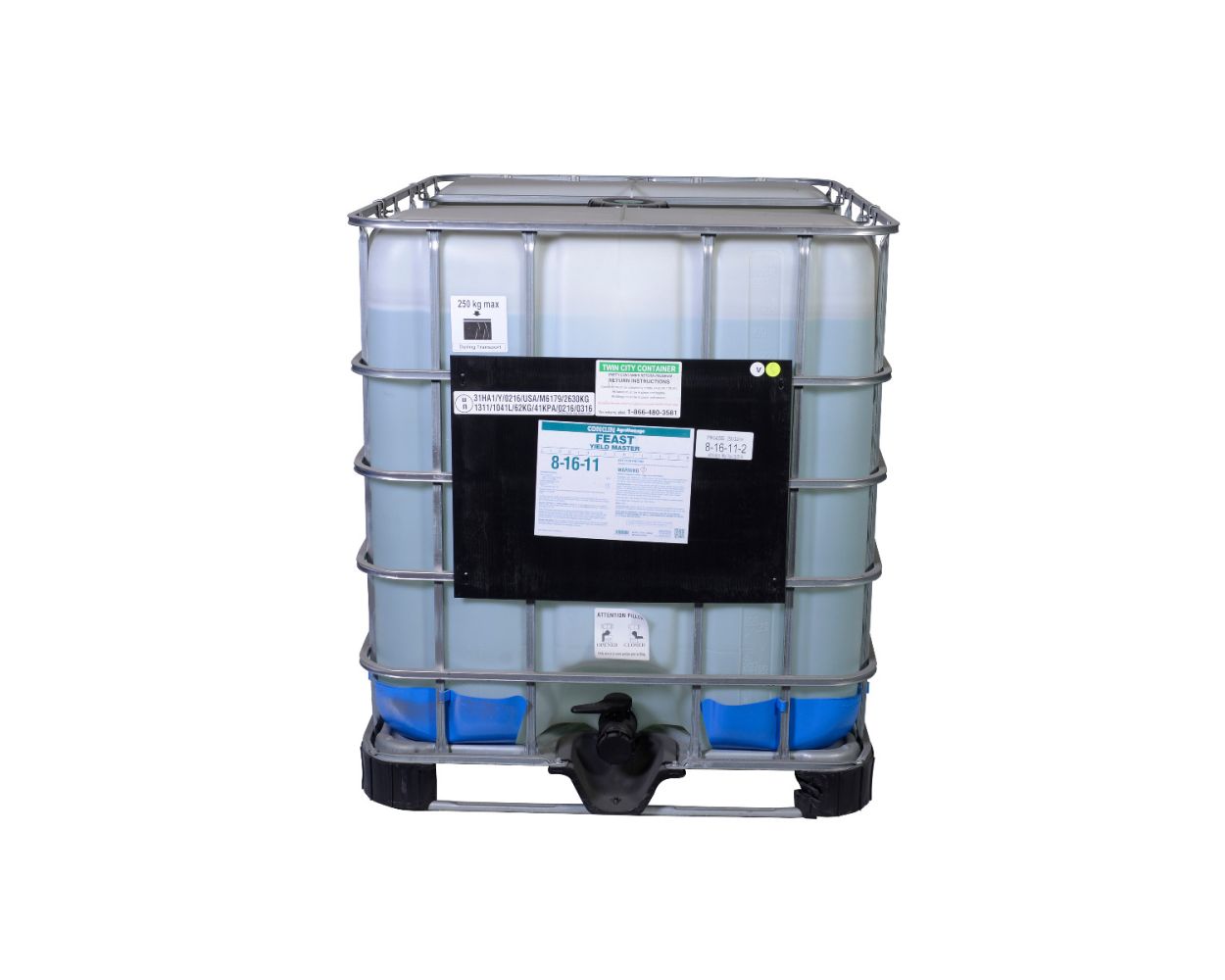Feast® 8-16-11w2S
Feast 8-16-11w2S starter and foliar fertilizer
Conklin’s Feast fertilizers start with the highest quality raw materials which produce a superior finished product that out performs the competition. For use a row applied starter fertilizer to get your crops off to a great start and then to follow up with strategically timed foliar applications to maximize your crops genetic potential. It has a low salt index providing 100% orthophosphate (food grade phosphoric acid), potash and sulfur that is safe for in-row, splitter and 2X2 starter fertilizer placement based upon your soils characteristics and your intended crop. Feast 8-16-11w2S is a special blend of our Feast 9-18-9 and Feast Side-Kick fertilizers conveniently pre-blended for your’ application.
What is the application rate for Feast® Yield Master Starter Fertilizers such as 9-18-9, 3-18-18, 8-16-11w2S, 2-15-19w3S and 8-24-0? |
| The Feast Yield Master designation refers to starter fertilizers. Conklin® recommends basing recommendations on a complete soil test through Midwest Labs in Omaha, NE.
Apply 2-5 gallons per acre at planting, either in-row, with a splitter or 2X2, depending upon crop and soil texture. If 2" x 2" application equipment is used, apply 4-8 gallons per acre at planting time. As an alternative and depending upon soil tests, apply a split application of 2-5 gallons per acre in-row or splitter plus 4-8 gallons per acre deep-placed (2" x 2") at planting. Follow soil test recommendations and include Feast Micro Master micro and/or secondary nutrients if indicated. Conklin also provides Feast Micro and Secondary Nutrients. |
What makes Feast® fertilizer better than other fertilizers? |
|
Feast fertilizers, like other Conklin products, start with high quality, virgin raw materials to produce a high quality finished product with low salt index and impurities. The phosphate in Feast fertilizer is 100% ortho-phosphate which is available to the plant as soon as the seed germinates. (Poly-phosphates must be converted, requiring ground temperatures in the mid to upper 60 degrees F range or higher.) Feast fertilizer does not need to be converted to be available to the plant. |

